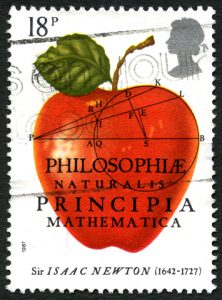 In 1970, the Harvard Business Review published an article by Peter Pyhrr in which he promoted the idea of zero-based budgeting. Different descriptions of this approach have been offered. Most explain that one should begin each periodic budgeting process tabula rasa – with a blank slate, and then justify every expense anew, not just adjust the last period’s budget by adding or removing items. A simpler explanation is that one should “rigorously review every dollar” in each successive budget. We doubt many have truly adopted this approach. It’s just too much work. It’s easier to cut and paste last year’s budget. In fact, momentum causes a repeating of last year’s expense items. Perceived “new” needs often result in just adding more expenditures each year. Only when income shortfalls force a review, do items get dropped. [Read more…]
In 1970, the Harvard Business Review published an article by Peter Pyhrr in which he promoted the idea of zero-based budgeting. Different descriptions of this approach have been offered. Most explain that one should begin each periodic budgeting process tabula rasa – with a blank slate, and then justify every expense anew, not just adjust the last period’s budget by adding or removing items. A simpler explanation is that one should “rigorously review every dollar” in each successive budget. We doubt many have truly adopted this approach. It’s just too much work. It’s easier to cut and paste last year’s budget. In fact, momentum causes a repeating of last year’s expense items. Perceived “new” needs often result in just adding more expenditures each year. Only when income shortfalls force a review, do items get dropped. [Read more…]
Where Were You When The Revolution Began? – Revisiting How We Work Our Deals
SLOOOOOOOW Mail ….. Fuhgeddaboudit
 We’re all seeing and hearing clashing views on why the Postal Service’s delivery times are lengthening. Those views may differ, but there doesn’t appear to be any meaningful dispute that it now takes longer to get a letter than we’ve experienced in the last 30 or more years. We’re not going to get involved in the morass of election debates. Instead, Ruminations wants to cut through all of that fog and remind our friends that our mailed notices aren’t getting there as fast as they used to “get.” Worse for our industry, certified mail almost always took longer to reach its destination than “plain” first-class mail. So, when you read about how long the mail is now taking (and there’s been some private testing confirming longer delivery times), add more time if you use certified mail. And, if the commanding document demands “registered” mail, realize that “registered” is not “certified” mail. It takes even longer to arrive at its destination. [Read more…]
We’re all seeing and hearing clashing views on why the Postal Service’s delivery times are lengthening. Those views may differ, but there doesn’t appear to be any meaningful dispute that it now takes longer to get a letter than we’ve experienced in the last 30 or more years. We’re not going to get involved in the morass of election debates. Instead, Ruminations wants to cut through all of that fog and remind our friends that our mailed notices aren’t getting there as fast as they used to “get.” Worse for our industry, certified mail almost always took longer to reach its destination than “plain” first-class mail. So, when you read about how long the mail is now taking (and there’s been some private testing confirming longer delivery times), add more time if you use certified mail. And, if the commanding document demands “registered” mail, realize that “registered” is not “certified” mail. It takes even longer to arrive at its destination. [Read more…]
Document Creep – Longer, But Not Better?

Congress ordered that the Declaration of Independence be “fairly engrossed on parchment.” [“Engross” means to “write in a large, clear hand.”] In olden days, lease, notes, mortgages, purchase and sales agreements, and all other documents were also “engrossed,” though unfortunately for researchers, not always in a large, clear hand. Then, copies were made. Where money was short or where the perceived value was absent, those copies were also made by hand. This is a craft no longer in much demand. For more important documents, a printer’s services were used, both for original documents to be executed and for copies of handwritten ones. The reproductions weren’t always faithful to the originals. For example, an early printing of the Declaration of Independence omitted one of the signatories. He was Thomas McKean, and he served as a President of Congress, President of Delaware, Chief Justice of Pennsylvania, and Governor of Pennsylvania. That was no small omission, and to more than just his family.
Our early handwritten legal documents had another thing in common with the Declaration of Independence. They were sparse. There were only 1,458 words in the Declaration, fewer than the average length of Rumination blog postings. [There is a message there, one we’ll ignore.] Here we have a founding document, a revered one (the Declaration, not this blog), yet it is remarkably short. So were leases before typewriters came into everyday use. With their introduction, it became easier to “include and expound.” Combined with the help of carbon paper and onionskin, faithful copies were now economically available. No longer would the copy differ from the original (other than when it came to margin notes and interlineations, a problem sometimes still seen). Along with these advantages, economy, speed, and faithful copies, the documents grew in length. [Read more…]
PrintHow Long Do I Have To Wait?
 There’s a song, Hesitation Blues, first recorded in 1916, that begins with this line: “How long do I have to wait?” It is also a question often asked when a lease or other agreement is silent as to a deadline or permissible period. And, almost always, that question is asked when something has gone wrong. That’s evidence it should be asked at the outset when people memorialize their agreement or expectations.
There’s a song, Hesitation Blues, first recorded in 1916, that begins with this line: “How long do I have to wait?” It is also a question often asked when a lease or other agreement is silent as to a deadline or permissible period. And, almost always, that question is asked when something has gone wrong. That’s evidence it should be asked at the outset when people memorialize their agreement or expectations.
We just looked at an August 12 decision by a New York lower court. In it, the judge wrote what is generally the law: [Read more…]
PrintDéjà vu All Over Again. How Our Documents Are Written Or Miswritten
 We think we’ve found an example that will illustrate one of our long time contentions – we need to skeptically re-read our documents and ask “why” with every line. We need to ask: “Why did we write that? What does it add to the document?” It might be safe to skim right over the “gender” clause, but equally “humdrum, boring” sentences and clauses really need attention.
We think we’ve found an example that will illustrate one of our long time contentions – we need to skeptically re-read our documents and ask “why” with every line. We need to ask: “Why did we write that? What does it add to the document?” It might be safe to skim right over the “gender” clause, but equally “humdrum, boring” sentences and clauses really need attention.
Here are some provisions from an otherwise uninteresting retail lease. They are discussed in a June 15, 2020 court decision that can be seen by clicking: HERE. [Read more…]
PrintRights, Powers, And Forgiveness – Let’s Loosen Up
 Today, we’re going to engage in some pure Ruminating. Most of the time, we (and others who are deeply engaged in this side of the “business”) focus on the “documents.” We think about how they are drafted and often mis-drafted. We read articles and (in “olden” times”) participate in programs focused on how better to do our “job.” But, there are some “rules” that get short shrift. These are rules that regularly have more force than do laws.
Today, we’re going to engage in some pure Ruminating. Most of the time, we (and others who are deeply engaged in this side of the “business”) focus on the “documents.” We think about how they are drafted and often mis-drafted. We read articles and (in “olden” times”) participate in programs focused on how better to do our “job.” But, there are some “rules” that get short shrift. These are rules that regularly have more force than do laws.
One is that there is a difference between having the “right” to do something that is required (or to abstain from doing something) and the “power” to do that thing (or not). Another comes in two versions: It’s easier to ask forgiveness than to get permission; and it’s easier to apologize than to get permission.
The success of either approach might be related to another aphorism: Might makes right. Each reveals two deficiencies found even in the best-crafted agreements. There aren’t enough trees in the world (proverbially speaking) to create enough paper to contain all of the words needed to regulate every possible permutation of conducts or situations. And, much of what we write (and agree-upon) just plain isn’t important; the provisions aren’t really needed. [Read more…]
PrintAnd Means And (Or) Or; Let’s Make That Clear
 The third (or the fifth) most used word in English is “and.” We looked at one of our “comprehensive” lease forms, one with 32,815 words and found that 1,775 (5.4%) of its words are “and.” We looked at a “national” Loan and Security Agreement (55,104 words) and found that “and” made up 3.3% of its words (1,820 of them). So, it’s about time we looked at this word. One thing for sure is that it is a “conjunction,” that “part of speech” covering words that join phrases. (A minor usage is as a noun. Witness: “He accepted the job, no ifs, ands or buts about it.”)
The third (or the fifth) most used word in English is “and.” We looked at one of our “comprehensive” lease forms, one with 32,815 words and found that 1,775 (5.4%) of its words are “and.” We looked at a “national” Loan and Security Agreement (55,104 words) and found that “and” made up 3.3% of its words (1,820 of them). So, it’s about time we looked at this word. One thing for sure is that it is a “conjunction,” that “part of speech” covering words that join phrases. (A minor usage is as a noun. Witness: “He accepted the job, no ifs, ands or buts about it.”)
One on-line dictionary explains the word’s use as a conjunction in this way: “[It is] (used to connect grammatically coordinate words, phrases, or clauses) [as follows:] along or together with; as well as; in addition to; besides; also; moreover.” [Read more…]
Print According to Lawrence Peter “Yogi” Berra (May 12, 1925 – September 22, 2015), late of Montclair, New Jersey, “You can observe a lot by just watching.” That’s how we get our “experience” – by watching what we ourselves have done and by what others have done. We can learn from those experiences, “ours” and “theirs.” That’s one reason we read court decisions. Doing so allows us to safely observe what others have done without getting burned, even when the situations covered by these decisions invoke another Yogiism: “It’s deja vu all over again.”
According to Lawrence Peter “Yogi” Berra (May 12, 1925 – September 22, 2015), late of Montclair, New Jersey, “You can observe a lot by just watching.” That’s how we get our “experience” – by watching what we ourselves have done and by what others have done. We can learn from those experiences, “ours” and “theirs.” That’s one reason we read court decisions. Doing so allows us to safely observe what others have done without getting burned, even when the situations covered by these decisions invoke another Yogiism: “It’s deja vu all over again.”
Recent Comments